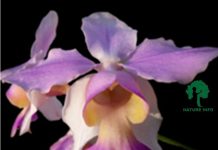Scientific name: Albizia procera (Roxb.) Benth.
Family: Mimosaceae
Synonym: Mimosa procera Roxb.
Bengali/Vernacular name: Sada koroi, Sil koroi, Jhunjhuna koroi, Koroi (Bengali); Loha siris (Sylhet); Jat koroi (Northern districts).
Tribal name: Choi, Ghepa (Mogh); Choipang, Chobang, Chapao (Marma); Khelvi (Garo); Khuri bofang (Tripura); Sil koroi gaith (Tanchangya); Awaiya, Changgae (Rakhaing).
English name: White siris, Safed siris, Forest siris.
Description of the plant: A large deciduous tree, with straight, unbuttressed bole, bark nearly smooth, pale grey to brownish-grey; leafless for a period in the dry season (August-September). Leaves bipinnately compound, pinnae 2-6 pairs, leaflets 5-10 pairs. Flowers sessile, yellowish-white, in numerous small heads. Pods linear-oblong, flattened, shiny reddish-brown with distinct marks over the seeds.

Plant parts used: Bark.
Medicinal uses: Bark-boiled water with table salt is prescribed to expel threadworms; bath with the same water is given for scabies.
An extract is made with the barks of the plant by boiling in water is used to wash the anus thrice a day until the anal fissure is cured.
A paste is made with bark of the plant is applied on the infected skin twice a day until the leprosy is cured.
Distribution: This species is found in forests of Chittagong, Chittagong Hill Tracts, Cox’s Bazar, Dhaka-Mymensingh Sal forests, and more or less throughout the country.















… [Trackback]
[…] Find More to that Topic: natureinfo.com.bd/albizia-procera/ […]